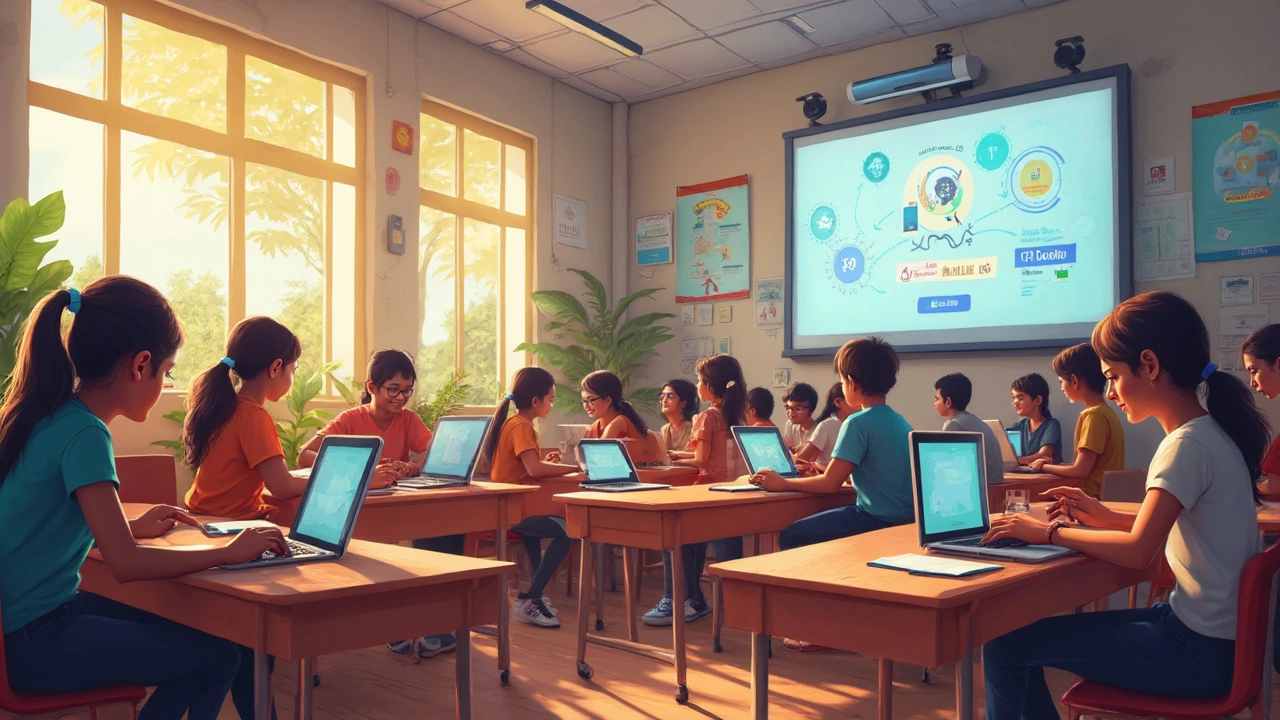Virtual Classroom – All You Need to Know
When you hear virtual classroom, a digital space where teachers and learners meet live using video, chat, and interactive tools. Also called online classroom, it lets education happen anywhere with an internet connection. It sits next to eLearning, self‑paced, often asynchronous online study and relies on a Learning Management System, software that organizes courses, tracks progress, and delivers content. Together they create a full‑stack learning experience: the LMS hosts the material, eLearning adds flexibility, and the virtual classroom brings real‑time interaction.
Why does a virtual classroom matter today? First, it encompasses real‑time video sessions, screen sharing, and instant quizzes, making the learning flow feel like a regular classroom. Second, it requires reliable internet and a device with a camera, which pushes schools to upgrade infrastructure. Finally, it enables teachers to reach students in remote villages, overseas, or homebound learners. In short, virtual classrooms break geographic walls while keeping the personal touch that pure eLearning sometimes lacks.
Tools, Platforms, and Everyday Use
Most schools choose platforms that bundle video conferencing with LMS features—think of Zoom integrated with Google Classroom or Microsoft Teams combined with Canvas. These tools facilitate virtual classrooms by providing breakout rooms, digital whiteboards, and attendance tracking. Teachers can launch a live session, share a slide deck, and poll students in seconds. For learners, the experience feels like a single app where they join a class, see the teacher’s face, and submit assignments without switching tabs. The synergy between the platform and the virtual classroom dramatically lowers the time needed to set up a lesson.
Behind every smooth session lies initial training, the onboarding process that equips educators with digital skills. Without it, even the best software can feel clunky. Effective training covers camera etiquette, troubleshooting audio issues, and designing interactive activities that keep students engaged. Schools that invest in solid initial training report higher attendance, better grades, and more positive feedback from families.
Challenges still pop up. Internet lag can freeze a live demo, and not every student has a quiet space at home. Schools address these pain points by recording sessions for later viewing and offering low‑bandwidth modes that strip out video while keeping audio and chat. Another hurdle is assessment integrity; many institutions use plagiarism detectors, timed quizzes, and proctoring tools to keep exams fair. By weaving these safeguards into the virtual classroom, educators preserve credibility without sacrificing convenience.
Looking ahead, virtual classrooms are merging with emerging tech. Augmented reality (AR) labs let science students conduct experiments in a 3‑D space, while AI‑driven analytics give teachers instant insight into which concepts students struggle with. This evolution means the virtual classroom will soon do more than just broadcast a teacher’s voice—it will adapt to each learner’s pace, recommend resources, and even suggest personalized practice.
Our collection below reflects this wide landscape. You’ll find practical guides on setting up a virtual classroom, comparisons between eLearning and virtual learning, tips for teachers to master the tech, and deep dives into how platforms like LMSs empower both sides of the screen. Whether you’re a student curious about what to expect, a teacher ready to launch your first live session, or an administrator planning school‑wide adoption, the articles ahead give you actionable steps and real‑world examples.
Top eLearning Platforms Explained: Features, Tips, and Real-World Benefits
Discover what makes a platform an eLearning platform, see top examples, compare features, and learn how to pick the right one for your needs—all simply explained.
How to Set Up E-Learning Like a Pro: The No-Nonsense Guide
Setting up e-learning isn't rocket science, but it can be overwhelming if you don't know where to start. This article breaks down what you really need to launch a smooth online classroom, from picking the right platform to spicing up your courses. Along the way, you'll get real-world tips and things to watch out for, so you don't fall into common traps. Get straight answers, shortcuts, and tools to make your e-learning journey easier. This guide is for anyone who wants to make virtual teaching simple, fun, and totally doable.
eLearning Platform: What It Is and Why It Works
Wondering what an eLearning platform really is? Get a clear, down-to-earth explanation of how these platforms work, what makes them different from regular websites, and why they're so popular right now. This guide breaks down the main features, types, and perks of eLearning platforms without any jargon. You'll find tips on picking the right one and hear about the latest trends shaping digital learning. Perfect for anyone interested in online education or looking to teach and learn smarter online.
Which App Should I Use to Teach Online? Top Picks for Every Teacher
Picking the right app can make or break your online teaching experience. This article dives into the best e-learning platforms based on what real teachers need—like easy setup, payment options, and student engagement tools. You'll get tips that help you avoid common mistakes and actually enjoy teaching online. No vague recommendations—just straight talk about what works, what doesn’t, and why. If you're tired of endless lists with no context, this is the guide you want.



